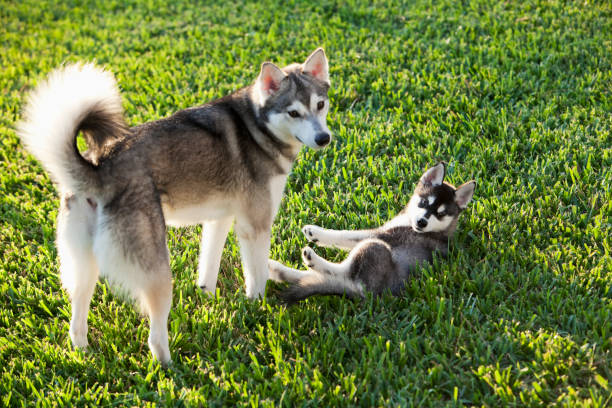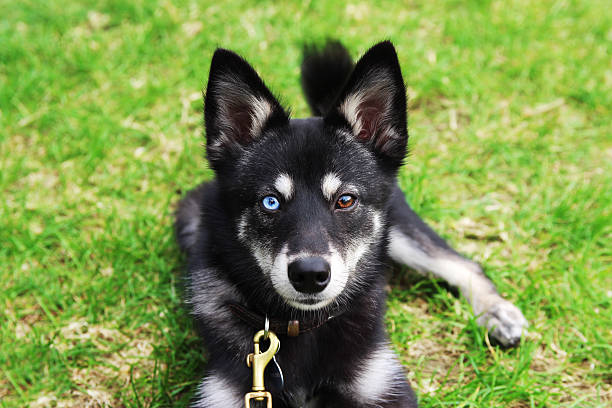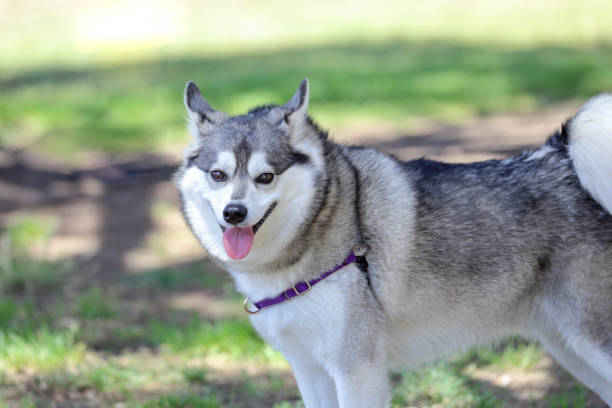Alaskan Klee Kai

Breed History:
The Alaskan Klee Kai is a relatively new breed, developed in the 1970s in Alaska by Linda Spurlin, who aimed to create a companion-sized version of the Alaskan Husky. This miniature spitz-type dog retains the appearance and energetic spirit of its larger sledge dog relatives but is bred primarily for companionship rather than work. "Klee Kai" means "small dog" in Athabaskan, a native Alaskan language, highlighting its intended petite stature.
With its striking resemblance to the Siberian Husky, the Alaskan Klee Kai combines intelligence, agility, and alertness. Although it may look like a working dog, the breed was intentionally bred to be more suitable for the home environment. Known for being lively and intelligent, the Klee Kai quickly gained popularity among dog lovers seeking a small yet active and intelligent companion.
|
Gender |
Height |
Weight |
|
Male |
38–43 cm |
7–10 kg |
|
Female |
33–38 cm |
5–9 kg |
Size – Small to Medium
Life Expectancy: 12–16 years

Breed Appearance:
The Alaskan Klee Kai resembles a miniature Husky, with a well-proportioned, athletic frame and a double coat that can be short to medium in length. Its mask-like facial markings, upright triangular ears, and bushy, curled tail add to its fox-like and alert expression.
This breed's coat can come in a range of colours, including black and white, red and white, or grey and white, and it sheds moderately year-round, with heavier seasonal shedding. Its bright, expressive eyes may be blue, brown, or even heterochromatic (one of each), contributing to its striking, wolf-like appearance.
Breed Type – Family/Guard:
The Alaskan Klee Kai is primarily a companion breed, known for its loyalty and affection toward its family. While not aggressive, it tends to be cautious and reserved around strangers, making it an excellent watchdog.
Though not bred for guarding or protection, its alertness and tendency to vocalise make it quick to notify owners of unfamiliar activity. Klee Kais thrive in households that offer mental and physical engagement. Their energetic and inquisitive nature makes them better suited to experienced dog owners who understand the needs of active, intelligent breeds.

Training:
The Alaskan Klee Kai is intelligent and quick to learn, but its independent and sometimes stubborn temperament can pose a challenge during training. It responds best to positive reinforcement, consistency, and patience. Harsh corrections can damage trust, making gentle but firm training essential.
This breed thrives with early socialisation and obedience training to help curb potential shyness or wariness of strangers. Mental stimulation is key, as boredom can lead to undesirable behaviours such as excessive barking or escape attempts. Klee Kais are agile and excel in activities like agility, trick training, and scent games.
Health & Care:
The Alaskan Klee Kai is generally a healthy breed with a long lifespan, but it can be prone to a few genetic conditions. These include patellar luxation, liver disease, heart murmurs, and thyroid issues. Responsible breeders screen for these conditions to maintain the breed’s health standards.
Due to its small frame and active metabolism, the breed requires a balanced diet suited to its energy level. Regular vet check-ups, dental hygiene, and weight monitoring are essential to ensure long-term wellness. With proper care, the Klee Kai remains a lively and healthy companion well into its senior years.

Living Conditions:
The Alaskan Klee Kai is well-suited for both apartments and houses, provided it receives sufficient daily exercise and mental enrichment. Though adaptable, it does best in homes with secure yards or access to parks where it can run and explore under supervision.
This breed is known for being escape artists, so secure fencing and leash control are important. While affectionate with its family, the Klee Kai values personal space and can become overwhelmed by constant handling, especially in noisy or chaotic households. It prefers cooler climates due to its thick double coat and may require extra care during hot weather.
Exercise:
The Alaskan Klee Kai has high energy levels and requires daily physical activity to remain happy and healthy. A combination of brisk walks, playtime, and mental challenges keeps this intelligent breed satisfied. Without adequate stimulation, it can become anxious or destructive.
Interactive toys, training games, and agility exercises are excellent ways to engage this breed. Despite its small size, the Klee Kai enjoys outdoor adventures like hiking and running. However, care should be taken in extreme temperatures, especially heat, to avoid discomfort or heat exhaustion.
Grooming:
The Alaskan Klee Kai has a dense double coat that requires regular grooming. Weekly brushing helps control shedding and keeps the coat in good condition. During seasonal shedding periods—typically twice a year—more frequent brushing is necessary to remove the loose undercoat.
Bathing is needed only occasionally, as the breed tends to be clean and odour-free. Regular ear checks and cleaning prevent infection, and nails should be trimmed regularly to avoid overgrowth. Dental hygiene is also important, with routine brushing recommended to prevent plaque buildup and dental disease.

Advantages:
-
Compact, attractive companion with a striking Husky-like appearance
-
Intelligent and trainable with positive reinforcement
-
Alert and watchful, makes an excellent watchdog
-
Loyal and affectionate with family, yet enjoys personal space
-
Adapts well to smaller living spaces if properly exercised
-
Low odour and relatively clean breed
Disadvantages:
-
Reserved and wary of strangers; requires early socialisation
-
High energy and intelligence require active, engaged owners
-
Prone to excessive barking if under-stimulated
-
Can be escape-prone if not properly secured
-
Not ideal for first-time dog owners due to its independent nature
-
Sheds seasonally and needs regular grooming

